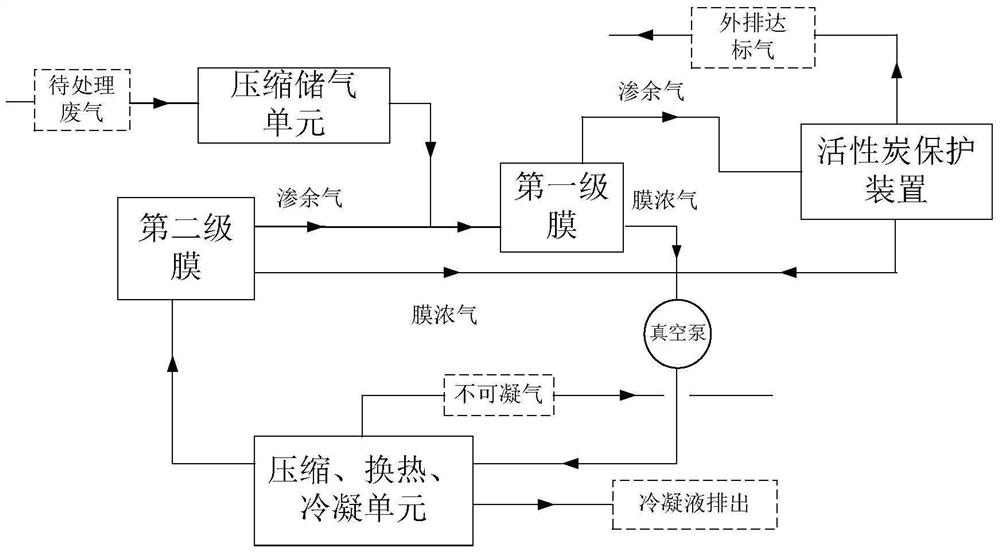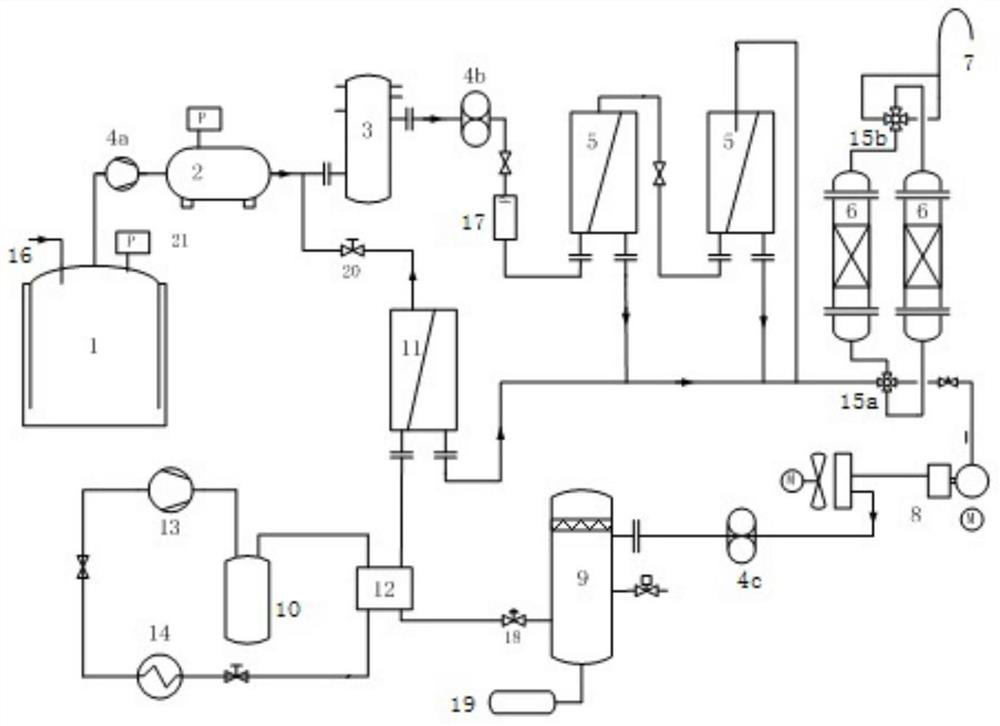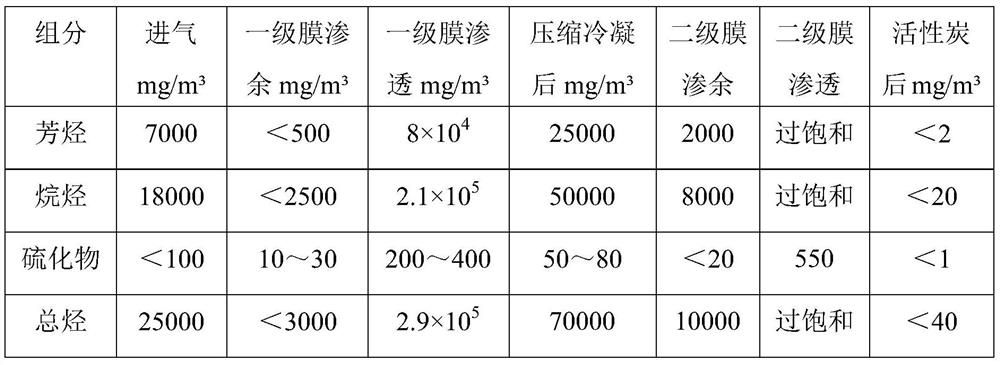A process and device for recycling and treating organic waste gas with two-stage membrane
A technology for recycling organic waste gas, applied in gas treatment, membrane technology, separation methods, etc., can solve problems such as increased condenser load, imperfect process technology, and reduced condensation recovery rate, so as to reduce load and reduce the amount of concentrated gas , Increase the effect of recycling efficiency
- Summary
- Abstract
- Description
- Claims
- Application Information
AI Technical Summary
Problems solved by technology
Method used
Image
Examples
Embodiment 1
[0083] Treatment of hexene production units in refineries, raw material storage tanks and waste oil storage tanks, the original tail gas treatment and upgrading equipment, the tail gas composition (volume fraction) is mainly nitrogen, and the total non-methane hydrocarbons are 25000mg / m 3 , of which aromatic compounds 7000mg / m 3 , alkanes 18000mg / m 3 . Hydrocarbons mainly include alkanes, olefins and a small amount of aromatics and sulfides. The membrane area of the device is 23m 2 , in the form of roll-type membrane modules, the first-stage membrane is 18m 2 , secondary membrane 5m 2 . Activated carbon adsorption tank volume 0.6m 3 , using coconut shell activated carbon loaded with basic functional groups, the particle size is 2mm. The total gas flow rate is 40~50m 3 / h, the main operating conditions of the process unit are shown in Table 1 below, and the process results are shown in Table 2:
[0084] Table 1, Device Operating Conditions
[0085] name ...
Embodiment 2
[0089] Treat the exhaust gas from the catalytic cracking unit of the refinery and the breathing valve of the waste oil storage tank (the storage tank has a nitrogen seal). The waste gas consists of 93% nitrogen and 7% hydrocarbons. Hydrocarbons mainly include alkanes, olefins, aromatics, ethers, and halogenated hydrocarbons, as well as sulfur-containing components such as hydrogen sulfide and mercaptans. The average gas flow rate is 100Nm 3 / h, device membrane area 130m 2 , primary membrane 100m 2 , which are five roll-type membrane modules connected in parallel, and the secondary membrane is a disc-type membrane module with a filling area of 30m 2 . The volume of each activated carbon adsorption tank is 4.5m 3 , using coconut shell activated carbon loaded with basic functional groups, the particle size is 2mm. Process device parameters such as temperature, pressure, flow rate, etc. are shown in Table 3 below. The total composition of gas, total non-methane hydrocarbon...
PUM
 Login to View More
Login to View More Abstract
Description
Claims
Application Information
 Login to View More
Login to View More - R&D
- Intellectual Property
- Life Sciences
- Materials
- Tech Scout
- Unparalleled Data Quality
- Higher Quality Content
- 60% Fewer Hallucinations
Browse by: Latest US Patents, China's latest patents, Technical Efficacy Thesaurus, Application Domain, Technology Topic, Popular Technical Reports.
© 2025 PatSnap. All rights reserved.Legal|Privacy policy|Modern Slavery Act Transparency Statement|Sitemap|About US| Contact US: help@patsnap.com



